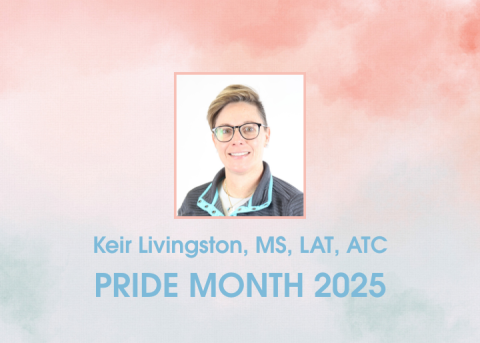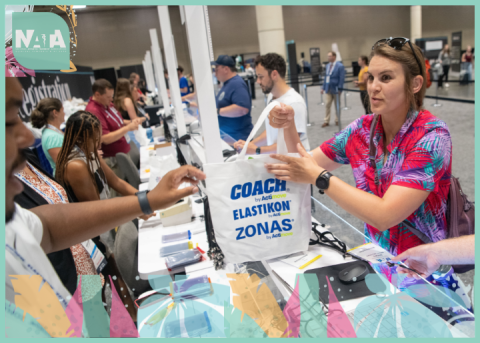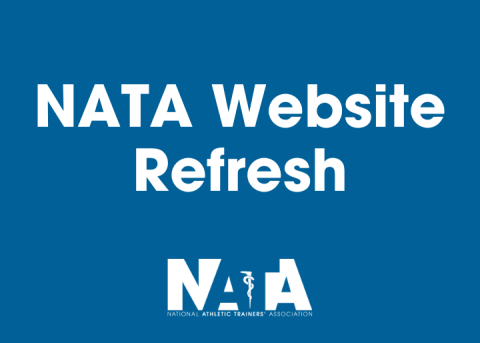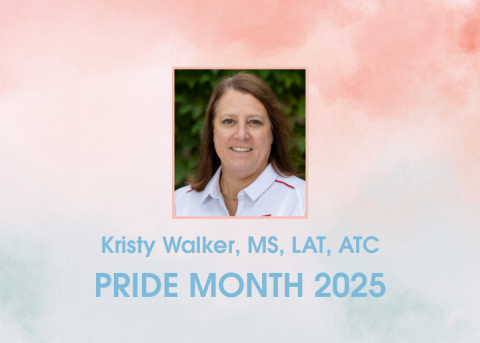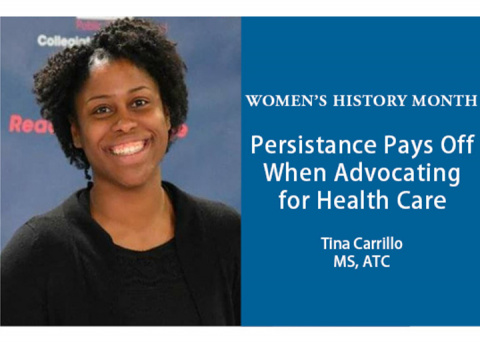
Editor's note: In honor of Women’s History Month this March, NATA would like to celebrate all women athletic trainers making a difference in the profession and their patients’ lives through a monthlong blog series.
When Tina Carrillo, MS, ATC, was hired by Friendship Collegiate Academy in 2011, she was not only the first athletic trainer caring for student athletes within the 16 Friendship Public Charter Schools, but the first athletic trainer ever hired within the D.C. public charter school system.
“The football coach we had at the time was up for contract renewal, and he basically said, ‘I need an athletic trainer here to assist me with these injuries,’” Carrillo said. “He had a lot of pull. Our football program is pretty big and has won the District of Columbia State Athletic Association (DCSAA) championship four times since 2011. They wanted him to stay, and that was his big thing – ‘I’m not going to stay unless you guys hire an athletic trainer.’”
Carrillo, a recent graduate school graduate at the time, met with the football coach and discussed the future athletic training program and how she would structure it. Two days after outlining her vision of what the program would look like, Carrillo was hired as the part-time football athletic trainer.
“When I started, it was just me in a room,” she said. “I was evaluating people on the floor. I didn’t have any supplies at first. Over the past nine years, we’ve turned it into a premier sports medicine program.”
Within months, her athletic director took notice of the health care services Carrillo was able to provide the football team, and decided to expand her role to a full-time position, allowing her to care for all of the high school’s athletes.
Her school wasn’t the only one to take notice.
“[The other charter school teams] thought, ‘Oh, we’re going to Friendship – cool, their athletic trainer can deal with this,’” she said. “Kids were waiting until they played my school and could see me to get an evaluation or to get an opinion on something.”
Not only was Carrillo receiving more requests to attend away games – often times conflicting with her home games – she had to content with the fact that being the only athletic trainer within the 16 D.C. Charter School Athletic Association meant her student athletes weren’t receiving care when she wasn’t around.
“I realized that if my kids travel to another charter school, there isn’t an athletic trainer there,” she said. “If their kids come to me, they received athletic training services; but if my kids went to them, they didn’t, and I didn’t think that was right. I thought that regardless of where my kids go in D.C., they should have health care services provided to them.
“I thought every student athlete deserved to have an athletic trainer, regardless of what school they went to.”
Carrillo decided to take matters into her own hands, and began reaching out to the 16 public charter schools with athletic programs about hiring an athletic trainer.
“I just felt like if I wasn’t going to do it, nobody else was,” she said.
When she began reaching out to the charter schools, she realized it wasn’t as simple as telling them they needed to hire an athletic trainer; she needed to show them why.
“They didn’t even know that they needed an athletic trainer at their games because there never was before,” she said, adding that she explained not only the emergency care aspect of athletic training, but also the preventative and rehabilitation care provided, and the return on investment for hiring an athletic trainer. “It was a lot meetings, a lot of PowerPoints, a lot of data.”
Carrillo collected years’ worth of data on what she was doing at Friendship. She shared the number of treatments she conducted; how much money these treatments saved the school and students’ families; as well as how much time was saved in regards to not only return to play, but keeping student athletes in school.
“Showing how athletic trainers save time and money got the conversations going,” she said.
Sharing this data was especially important, she said, because the biggest barrier the school cited was lack of finances.
“They always said, ‘Oh, we don’t have the money to pay somebody.’ Well, yes, you do,” she said.
She worked to educate school officials on the three most common ways of hiring an athletic trainer in D.C.: the per diem route; hiring an AT to serve as a part-time teacher, part-time athletic trainer; and partnering with a local clinic or hospital that has athletic trainers for outreach services.
The tipping point came in 2018, when the Korey Stringer Institute came to the area to hold a Collaborative Solutions meeting – now known as the Team Up for Sports Safety program – with the D.C. Athletic Trainers’ Association.
“We pulled everyone together,” she said. “We had public schools, charter schools, private schools. During that meeting, I met with the treasurer of the D.C. Public Charter School Board, and he said, ‘You know, we got to make this happen.’”
A second full-time athletic trainer was hired after that meeting in 2018. After that, three part-time athletic trainers were hired with the goal of another part-time athletic trainer being hired for the 2020-21 academic year. Ultimately, the goal is for these part-time positions to transition into full-time positions, just as Carrillo did nine years ago.
“People are starting to see that they need an athletic trainer,” she said, explaining that while she was recently assisting injured players of an opposing team, the players and parents commented on wishing they had an athletic trainer of their own. “Their coach contacted me the next day. He asked, ‘How do we go about having someone like you at our game?’
“We’re still working; we’re still pushing.”
Since more athletic trainers have been hired by D.C. public charter schools, Carrillo said she has noticed more community members rave about their athletic trainer.
“The students see, the parents see and the school administrators see how beneficial it is to have an athletic trainer,” she said. “For my student athletes, when they go to away games, they now have health care services wherever they go. They didn’t use to have that.”
After nine years of advocating for the profession and for the health and safety of all D.C. public charter school student athletes, Carrillo has learned a few lessons that can help others who are in a similar situation.
“Don’t get discouraged and keep trying to have those conversations because eventually they’re going to hear what you’ve been saying, they’re going look at what you’ve been trying to show them and it’s finally going to click,” she said. “Things aren’t going to happen overnight, but they will fall into place. Don’t get discouraged; keep working toward it; keep telling people about the need and eventually something will happen.”
She said to also utilize resources that help show value and return on investment. Carrillo personally used NATA Salary Survey and the ATLAS (Athletic Training Location and Services) database as well as collected her own data.
Another resource vital to Carrillo’s efforts was her support system. She said she has leaned on her friends, mentors and colleagues from the D.C. athletic training community and beyond when she’s needed to vent her frustrations, find her motivation or gain another perspective.
“Having a circle of people is really what has helped me out because you do get discouraged; you think what you’re doing isn’t working,” she said. “So when you have people behind you saying, ‘Don’t quit – it’s working,’ that helps motivate you. Also, the kids. They’re obviously the No. 1 reason why I do this. They deserve to have access to athletic trainers. That’s the biggest thing.”

